Contribute
| India: Pre-history And Indus Period – Philosophy And Religion |
Satyendra Sharma
01/14/2021
Paleolithic and Neolithic communities were pastoral. Artifacts from these periods suggest elements of nature worship and animism. They appreciated terrestrial assets like land, tree and water to fulfill their daily needs. They also practiced animal sacrifice. Such rituals likely to be in practice during the Indus period are also evidenced in the Indus seals. Human prowess possibly develops into meditation as we see a human figure seated in a yogic posture surrounded by animals. Similar yogic postures are also depicted on seals from Harappa. It is not clear if these postures can be associated with any kind of religious practice. The person in the yogic posture is thought to be representing Shiva. The concept of Shiva in India as a teacher and healer is seriously discussed in later literature.[SJ1] The scientific date for when yoga practice started in India is still debated. A seal with a well-dressed priest- like person could represent a religious teacher. The discovery of a fire altar at Kalibangan, in association of the earlier discovery of the seal with a priest-like image may be connected to fire sacrifice. Animal remains discovered at these sites suggest animal sacrifice. The positioning and the orientation of such pits were possibly connected to sky maps - we do find some evidence of star depiction in the seals. Such constructed firepits are not common in India. Burial chambers have been discovered at most Indus sites. The terracotta utensils buried along with the deceased indicate a belief system based on life after death. Jewelry is rarely observed in these burials, pits though it could be a practice restricted to the burial of women only. Some burial chambers are brick-lined, evoking some protection against degradation. The opulence of the Indus society is reflected in their religious and philosophical outlook. People seem to have developed a belief system that associates Nature with the future, and with the heavens[SJ3] [ss4] . ____________________________________________ Dr. Satyendra Sharma leads the Philosophy and Religion track in India Discovery Center's project on "Evolution of Indian Culture: Pre-history to 1947AD". More information and updates on the project are available at Information on India Discovery Center is at https://www.indiadiscoverycenter.org (c) Copyright 2021 India Discovery Center, Inc. All rights Reserved.Pre-history and Indus Period – Philosophy and Religion
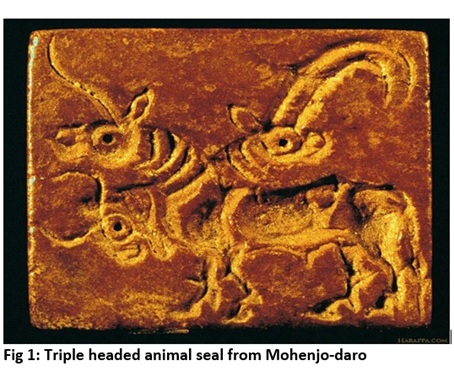
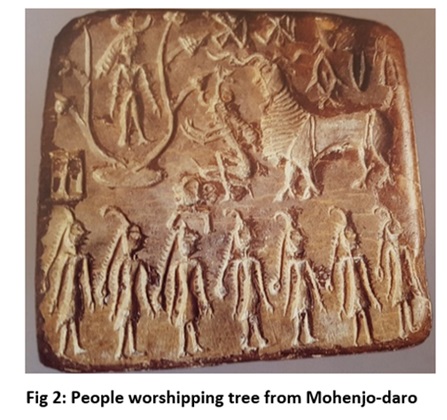 Tree motif and worship under a tree are fairly common on the Indus seals. The tree as a divinity has continued through the centuries and remains a belief system for many of India’s faiths even up to the present day. Animals amidst a tree are a common grouping on Indus seals, with the tree serving to shelter the animals. Ritualistic paraphernalia like utensils, conch, and musical instruments point to a festive service possibly, for a harvest festival.
Tree motif and worship under a tree are fairly common on the Indus seals. The tree as a divinity has continued through the centuries and remains a belief system for many of India’s faiths even up to the present day. Animals amidst a tree are a common grouping on Indus seals, with the tree serving to shelter the animals. Ritualistic paraphernalia like utensils, conch, and musical instruments point to a festive service possibly, for a harvest festival.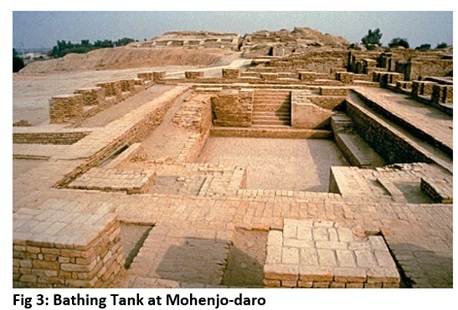 Large water tanks, wells and elaborate water services could point to purification rites associated with worship. Since the scripts from this period remains undeciphered, the existence of such type of worship is only indirectly inferred.
Large water tanks, wells and elaborate water services could point to purification rites associated with worship. Since the scripts from this period remains undeciphered, the existence of such type of worship is only indirectly inferred. 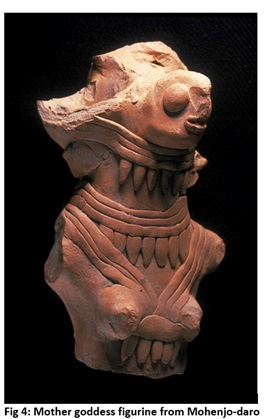
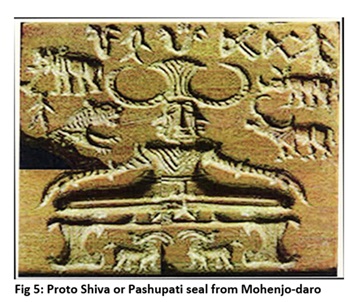 Clay female figurines in Paleolithic and Neolithic India have been linked to a fertility cult and the possible worship of a mother goddess. Evidence of bangles and garlands suggest decoration and veneration of the deity. The female contribution to progeny, to providing food and looking after the family might have been recognized as a female energy (later possibly subsumed into the tantric cults as Shakti).
Clay female figurines in Paleolithic and Neolithic India have been linked to a fertility cult and the possible worship of a mother goddess. Evidence of bangles and garlands suggest decoration and veneration of the deity. The female contribution to progeny, to providing food and looking after the family might have been recognized as a female energy (later possibly subsumed into the tantric cults as Shakti). 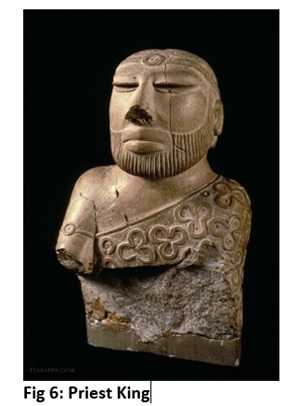 Speculative philosophy [SJ2] was likely to be concentrated on the terrestrial objects, with meditation being an exception. Some seals depict mythical animals. Life and growth as the laws of nature were probably understood and respected. Remediation of difficulties and distress were done through animal sacrifice to the deities.
Speculative philosophy [SJ2] was likely to be concentrated on the terrestrial objects, with meditation being an exception. Some seals depict mythical animals. Life and growth as the laws of nature were probably understood and respected. Remediation of difficulties and distress were done through animal sacrifice to the deities. 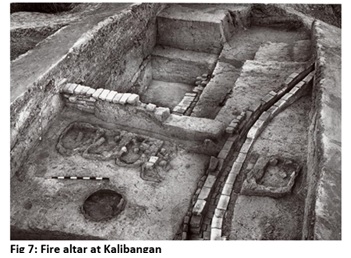 Houses during the IVC era are also believed to be aligned with the orientation of the celestial bodies, suggesting the possible existence of astrological practices.
Houses during the IVC era are also believed to be aligned with the orientation of the celestial bodies, suggesting the possible existence of astrological practices.
https://www.facebook.com/Evolution-of-Indian-Culture-An-IDC-Project-107749391111922
You may also access this article through our web-site http://www.lokvani.com/
.jpg)






